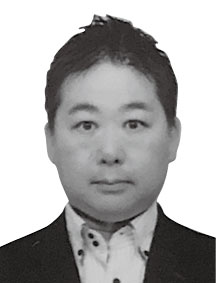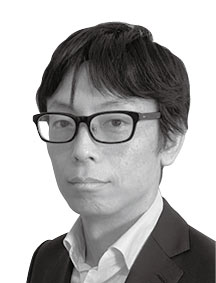Hitachi Global Data Integration Service for IoT
Highlight
Companies that do business worldwide are experiencing a growth in opportunities to create new business value by using IoT data collected from products operating in different geographic regions. Meanwhile, actually doing IoT-based business around the world requires very time-consuming and expensive preparation work for tasks such as examining local IoT connections, signing IoT connection agreements, building and operating data collection/storage systems, and handling legal compliance. Hitachi Global Data Integration is a global IoT service that Hitachi provides to enable customers to focus on core competence creation. The service provides a comprehensive lineup of support for the functions required to do IoT-based business around the world. This article describes the value provided by the Hitachi Global Data Integration service. It also presents some technologies designed to enable this IoT-based service around the world, and describes the implementation model and future outlook.

Introduction
The recent rise of the Internet of Things (IoT) is causing the number of IoT devices and amount of stored data to grow at an increasingly rapid pace, giving companies more opportunities to use this stored data to create new business areas or work on solutions to societal challenges(1). Companies with worldwide delivery of products such as vehicles and industrial machinery are expected to start using IoT data collected from products operating in different geographic regions to create business value for needs such as improving the efficiency of operation/maintenance operations and proposing new services(2).
However, actually using IoT data collected from products operating in different regions requires various preparation work for tasks such as examining local IoT connections*1, signing IoT connection agreements, building and operating data collection/storage systems, managing IoT devices, and managing IoT data. The number of IoT devices and the amount of data they generate are also expected to grow at an increasingly rapid pace, so IoT-based platforms will inevitably require large capacities and scalability. These requirements have been a major hindrance to starting worldwide IoT data usage since customers have difficulty handling all of them alone.
Hitachi has responded by providing Hitachi Global Data Integration, a global IoT service that provides a comprehensive lineup of support for customers running IoT-based businesses around the world. This article provides an overview of this service, presents some of the technologies used to create IoT-based services, and describes the implementation model.
- *1
- Network lines that collect data from IoT devices.
Overview of Hitachi Global Data Integration Service
Fig. 1—Overview of Hitachi Global Data Integration Service  This figure shows an overview of the Hitachi Global Data Integration service. The service integrates the IoT platforms provided by each network operator. It can provide everything needed to collect, store, and utilize IoT data, helping enable prompt creation of new IoT data-based services.
This figure shows an overview of the Hitachi Global Data Integration service. The service integrates the IoT platforms provided by each network operator. It can provide everything needed to collect, store, and utilize IoT data, helping enable prompt creation of new IoT data-based services.
Figure 1 provides an overview of the Hitachi Global Data Integration service. The service is composed of the Connection Service (which has functions for providing and managing IoT connections), the Data Collection and Storage Service (which stores data collected over IoT connections ), and the Data Utilization Solutions (which provide functions for graphically displaying collected and stored data).
The Connection Service provides functions for providing and managing worldwide IoT connections spanning different countries and regions. The Hitachi Global Data Integration service acts on the customer’s behalf to rapidly create everything needed up to and including functions for providing and managing connections to network operators around the world.
The Data Collection and Storage Service is a cloud-based IoT data collection and storage service that can be deployed worldwide. It serves as the Data Utilization Solution that provides all the standard functions needed for utilizing IoT data, such as functions for graphically displaying IoT data and IoT device operation information, and for setting alarms for various types of data. So it can promptly collect, store, and display data from IoT devices operated in locations around the world. The Data Collection and Storage Service also provides application programming interfaces (APIs) for external access, enabling connection with various customer applications.
As described above, the Hitachi Global Data Integration service provides a complete range of functions for providing and managing IoT connections, and for managing IoT data and IoT devices. These functions enable the service to greatly assist the creation of customer IoT-based businesses.
Features of Hitachi Global Data Integration Service
The Hitachi Global Data Integration service is composed of a global communication control platform that provides the Connection Service, along with a data collection/storage platform. The features of each platform are presented below.
Global Communication Control Platform
Fig. 2—Features of Global Communication Control Platform  Network operators use their IoT platforms or other infrastructure to provide integrated management of mobile connections (using SIM cards) for IoT devices. To use mobile connections (using SIM cards), user companies previously needed to sign up for each of these IoT platforms individually. The global communication control platform interconnects each IoT platform, enabling global communication management that spans the different countries and regions the user company does business in.
Network operators use their IoT platforms or other infrastructure to provide integrated management of mobile connections (using SIM cards) for IoT devices. To use mobile connections (using SIM cards), user companies previously needed to sign up for each of these IoT platforms individually. The global communication control platform interconnects each IoT platform, enabling global communication management that spans the different countries and regions the user company does business in.
As shown in Figure 2, the global communication control platform connects to network operators around the world over connection interfaces (APIs), and provides worldwide line control/management functions in a unified manner. The time and labor needed were previously an issue when using IoT connections around the world. Users needed to investigate and sign up with each local network operator individually, and then create a system to conform to each provider’s interface. The Hitachi Global Data Integration service addresses this challenge by providing interfaces for each network operator. These interfaces assimilate and consolidate the differences among providers, enabling unified line control and management spanning different countries and regions. This feature enables the Hitachi Global Data Integration service to execute functions such as opening/closing mobile connections (using SIM cards; subscriber identity module cards) to IoT device shipped around the world, and managing the communication statuses of these connections. Since mobile connections (using SIM cards) are also closed networks owned by network operators, they are more secure than Internet lines exposed to malicious attacks from outside(3).
Scalable Data Collection/Storage Platform
Fig. 3—Data Collection/Storage Platform Configuration  A series of processes after IoT data intake and API intake are executed by the data collection/storage platform in a distributed manner by allocating the processes to selected machines within a cluster composed of multiple machines. The platform can also accommodate scaling out or scaling in by increasing or decreasing the number of machines online.
A series of processes after IoT data intake and API intake are executed by the data collection/storage platform in a distributed manner by allocating the processes to selected machines within a cluster composed of multiple machines. The platform can also accommodate scaling out or scaling in by increasing or decreasing the number of machines online.
IoT data collection/storage requires scalability so that systems can be expanded flexibly to maintain reliable data collection and storage as equipment and data sizes grow. The method used to bring scalability to the Hitachi Global Data Integration service is described below in reference to the system configuration (see Figure 3).
The Hitachi Global Data Integration service uses multiple machines to run the IoT data intake processes that collect IoT data and the API intake processes used to provide access to the IoT data from the user company. These processes are then executed by allocation to selected low-load machines. The processes are allocated using Hitachi Application Framework/Event Driven Computing (HAF/EDC), a distributed application development/execution framework. HAF/EDC makes it easy to develop and execute applications that perform parallel distributed processing of the received data and compile the results on clusters composed of multiple machines. The Hitachi Global Data Integration service uses HAF/EDC to perform load distribution by allocating processes to nodes with a low processing load, and also to increase or decrease the number of machines available for allocating processes (scaling out or scaling in) online by rolling updates*2. These features ensure reliable data collection and storage by increasing or decreasing the processing throughput in a linear manner when the volume of handled data increases or decreases.
- *2
- Updates that upgrade software progressively without shutting down operation of the entire system.
Implementation Model
Fig. 4—Example of Global IoT Service Implementation and Data Utilization  Adopting the Hitachi Global Data Integration service should enable customers to create IoT data-based monitoring services, and new services for activities such as promoting new products or selling consumable parts.
Adopting the Hitachi Global Data Integration service should enable customers to create IoT data-based monitoring services, and new services for activities such as promoting new products or selling consumable parts.
Figure 4 illustrates how the Hitachi Global Data Integration service is used to enable the use of IoT data for machine tools.
Company A is a machine tool manufacturer that makes large, small, and portable machine tool types. It does business in over 100 countries around the world, supplying its products to sales and rental distributors through agencies. Its products are used worldwide at end-user sites.
To grow sales and improve revenue, Company A is working on creating new IoT-based business concepts. Specifically, it is planning to grow revenue by creating a way to collect operation information from machine tools that can be used to assess the aging of equipment and consumable parts. Equipment aging will be assessed from increasing equipment power consumption trends. Consumable parts aging will be assessed from information such as equipment temperature, vibrations, and rotary speeds. This information will be provided to the company’s electronic commerce (e-commerce) site. It will be used as data to assist in recommendations for new products, and to assist sales promotions for the company’s branded consumable parts. Company A is also planning to provide monitoring services to end users. They will include a service that provides operation information using graphical displays of IoT data, a failure alarm detection and notification service, and a position information-based geofence service for making assessments such as whether equipment has been stolen.
The Hitachi Global Data Integration service can meet the needs of Company A’s new business concepts by providing services such as supplying IoT connections, collecting, processing, and storing IoT data, providing the APIs needed to supply data to the e-commerce site, equipment information management functions needed to create monitoring services, graphical display functions for IoT data, email-based alarm notification functions, and equipment map display functions.
When initially releasing services, Hitachi is planning to provide Company A with services that will comply with the regulations of countries and regions such as North America, South America, Australia, and the European Union (EU). The company is then planning to progressively expand services into areas with complex regulations such as China and India in Asia, and Saudi Arabia and Oman in the Middle and Near East. Hitachi is also planning to release services for social infrastructure businesses as well as for the industrial sector represented by Company A.
Conclusions
This article has presented an overview and implementation model for the Hitachi Global Data Integration service, a global IoT service that provides a comprehensive lineup of assistance for customers running IoT-based businesses around the world. The use of this service enables customers to collect, store, and graphically display IoT device data in a global, quick and easy manner. The use of these data results enable customers to focus on core competence creation. The recent spread of the novel coronavirus has restricted the movement of people and brought other major changes to daily life. Hitachi wants to use the Hitachi Global Data Integration service to provide remote environments that will help bring transparency to site data, and to provide solutions to overcome various other challenges that address today’s changing world. The company will continue to support customers creating and running worldwide IoT businesses, helping ensure ongoing industrial growth worldwide.
REFERENCES
- 1)
- K. Rose et al., “The Internet of Things (IoT): An Overview,” The Internet Society, p. 8 (Oct. 2015).
- 2)
- D. Slama et al., “Enterprise IoT: Strategies and Best Practices for Connected Products and Services,” O’Reilly Media, Inc. (Nov. 2015).
- 3)
- W. Zhang et al., “Security Architecture of the Internet of Things Oriented to Perceptual Layer,” International Journal on Computer, Consumer and Control, Vol. 2, No. 2, pp. 37–45 (Jun. 2013).







